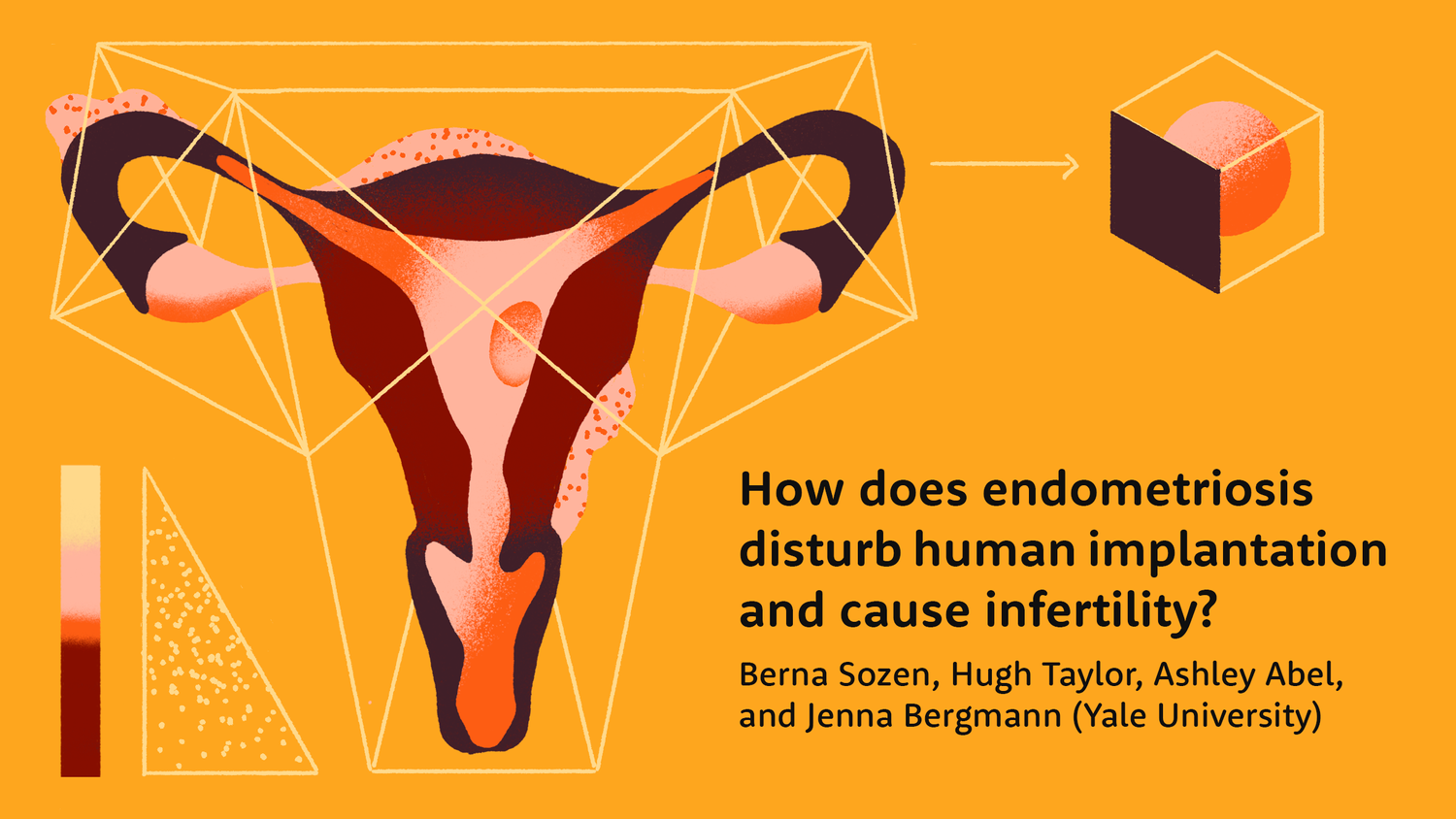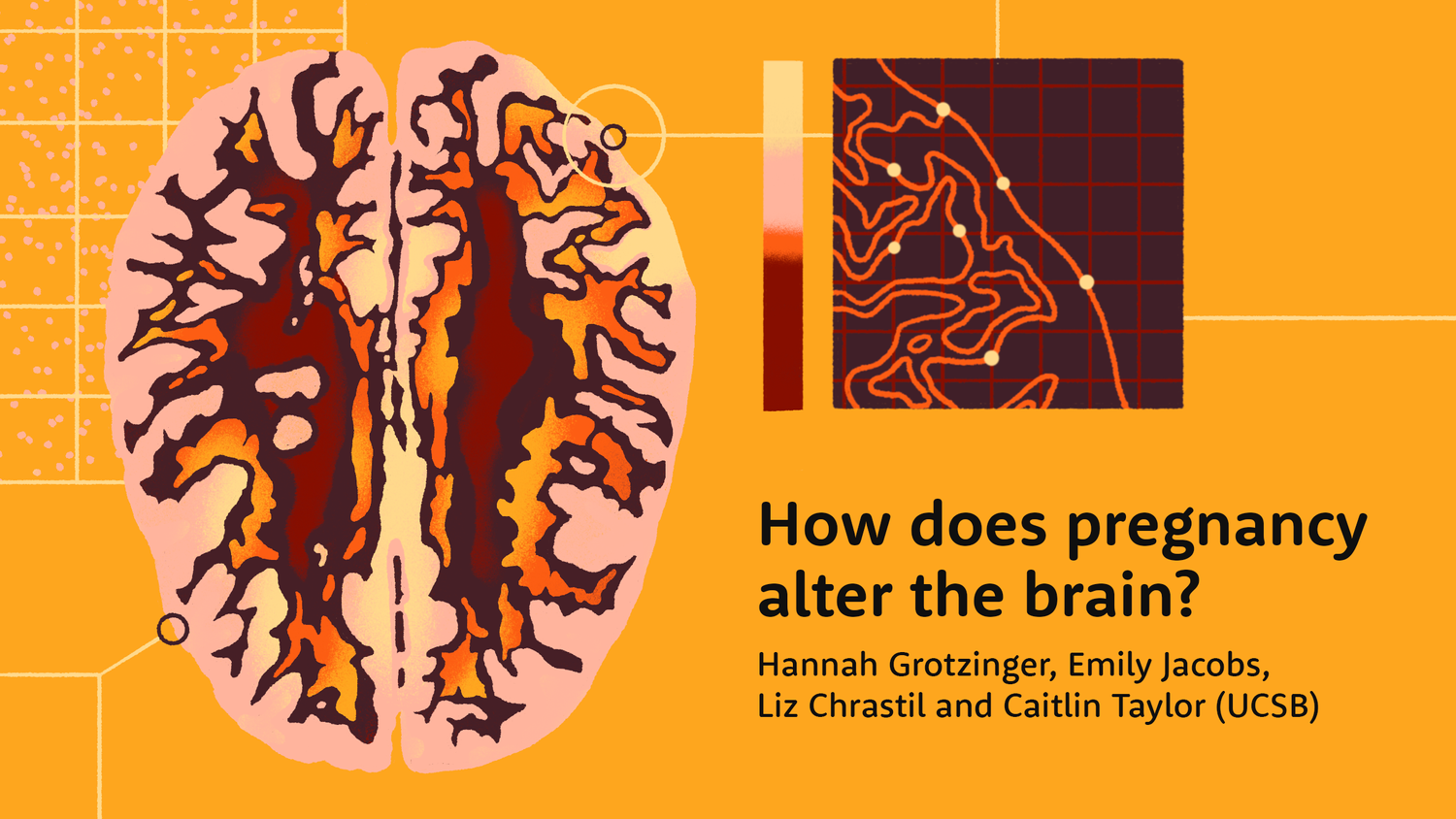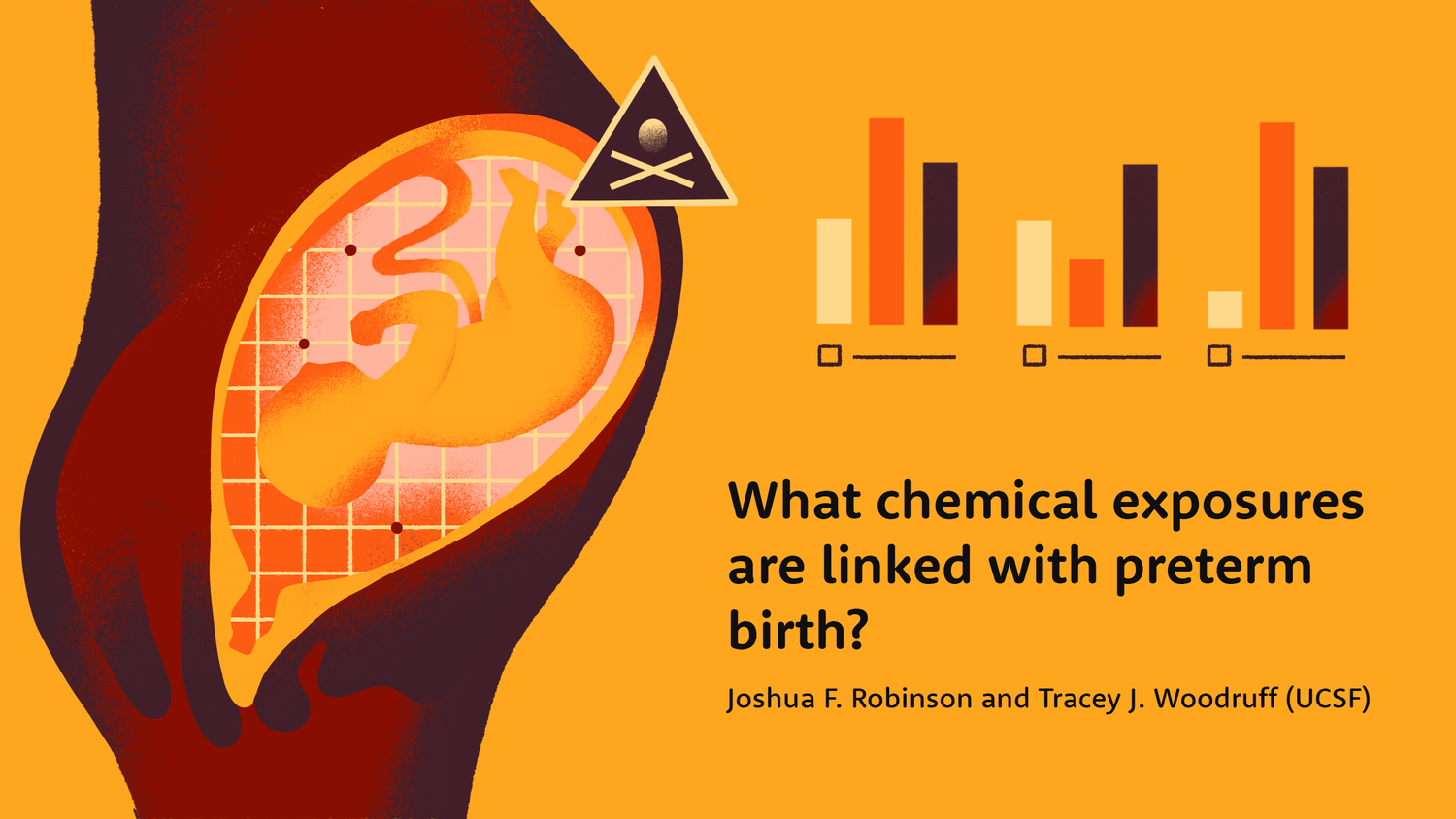The projects we funded to bridge the gap in our knowledge of female reproductive health.
Follow us on X (Twitter) to stay in the loop.

Research proposal:
Modeling human implantation in 3D to uncover causes of infertility in endometriosis
Recipients:
Berna Sozen, Hugh Taylor, Ashley Abel, and Jenna Bergmann
Endometriosis (growth of uterine lining outside the uterus) is associated with infertility for reasons that are not well understood. Why? We cannot simply open the human body and see what happens at the beginning of a pregnancy.
The recipient, Berna Sozen at Yale University, is a young and ambitious PI whose group in collaboration with Hugh Taylor is developing a 3D model of early human development to better understand how conditions like endometriosis hinder embryo implantation. Given the high-risk nature and embryonic components, this research cannot be funded by the NIH, which makes it an ideal fit for Repro Grants.

Research proposal:
Organizational effects of sex steroid hormones on the maternal brain
Recipients:
Hannah Grotzinger, Emily Jacobs, Liz Chrastil, Laura Pritschet (UCSB)
Women undergo pronounced physical changes during pregnancy, yet there is limited research on how pregnancy influences brain structure and function. Building on foundational work comparing the brain before and after pregnancy (see Hoekzema et al., 2022, 2017; Kim et al., 2010; Orchard et al., 2023), the Jacobs lab is conducting a dense sampling study to map the structural and functional architecture of the brain throughout the entire gestational period. The resulting research insights have the potential to lay the groundwork for identifying biomarkers of postpartum depression prior to the onset of symptoms.

Research proposal:
Novel identification of EC exposures linked with preterm birth
Recipients:
Joshua F. Robinson and Tracey J. Woodruf (UCSF)
Preterm birth (PTB) is the leading cause of neonatal mortality and impacts ~10% of pregnancies in the U.S. (March of Dimes, 2017). Pregnant women are exposed to thousands of environmental chemicals (ECs), with communities of color experiencing disproportionate exposure to known toxicants (Woodruff, 2011; 21233055). Growing evidence suggests that EC exposures contribute to PTB and related adverse developmental outcomes (Stillerman, 2008; 18836129). Due to insufficient biomonitoring methods, only a small portion of toxicants has been characterized so far. The UCSF team will use a novel approach to profile maternal blood for thousands of ECs and identify quantitative differences among groups of women associated with preterm birth.

Research proposal:
Biogeographic and longitudinal study of microbial and phenotypic interactions in endometriosis
Recipients:
Tal Korem, Helai Hesham, Noemie Elhadad, Julia Urban
Endometriosis, a highly prevalent and challenging-to-diagnose chronic condition, has been linked to the microbiome in several studies (Leonardi et al. 2019; PMID: 31454452; Wei et al. 2020; PMID: 32299442). This research group will conduct the first large-scale study to investigate potential associations between changes in the vaginal microbiome and various aspects of endometriosis, including subtypes, stages, and symptoms over time. These insights will lay the groundwork for subsequent research into new endometriosis diagnostics, therapeutics, and symptom management strategies. Repro Grants is the first funder of this project. With our initial support, we hope to unlock larger pools of capital for this critical research.

Research proposal:
Derivation of patient-specific trophoblast stem cells for disease modeling
Recipients:
Norah Fogarty (King's College London)
Healthy pregnancy relies on the functioning of the placenta. Placenta is made up of cells called trophoblasts. Trophoblast stem cells (TSCs) can be grown in the lab to study placenta diseases, but they can only be derived from early pregnancies, potentially not representing later disease development. This research proposal aims to use transcription factor-based programming to generate patient-specific TSCs for studying placenta-related diseases. The goal is to generate a catalog of TSCs from clinically normal and disease-affected patients to study disease mechanisms. This knowledge may lead to the development of treatments for diseases such as preeclampsia and fetal growth restriction.

Research proposal:
Identification of a novel regulator of female reproductive function
Recipients:
Josephine Bowles and Michael Piper, Cassy Spiller and Raul Davila (University of Queensland)
The research project aims to investigate the role of a protein called NFIX in the female reproductive system. While previous studies have demonstrated NFIX's involvement in neural development and spermatogenesis, its role in female reproduction remains unexplored. Building on their preliminary research, the team postulates that NFIX plays a crucial role in regulating different tissues of the hypothalamic-pituitary-gonadal (HPG) axis, responsible for producing female hormones throughout adult reproductive life. By understanding NFIX's function in these areas, the team hopes to gain insight into the causes of diseases such as premature ovarian insufficiency and polycystic ovarian syndrome, potentially paving the way for prevention and treatment strategies.

Research proposal:
Developing a new category of non-hormonal contraceptives with advanced biomaterials
Recipients:
Sam Dowland, Kirsten Shankie-Williams, Dr Ali Fathi (University of Sydney)
A copper Intrauterine device (IUD) is today's only non-hormonal, long-acting contraceptive option. But IUDs can cause cramping and are painful upon insertion. According to UN estimates, there are 270 million women with an unmet need for contraception, and an additional 200 million women discontinue contraceptive use due to side effects. Preliminary research conducted by the team has shown that a zinc-based contraceptive inserted into the uterus has the potential to be a safe and effective non-hormonal option. The team is working on a new delivery method to reduce painful side effects caused by the shape and rigidity of current IUDs.

Research proposal:
Developing AMHR2 agonists to control the ovarian reserve
Recipients:
David Pepin and Marie Meinsohn (Massachusetts General Hospital)
Women start losing their eggs before birth. The Anti-Mullerian Hormone (AMH) is the only known hormone that inhibits follicles (each holding an immature egg) from activating in the ovary. The team has shown that prolonged administration of recombinant AMH in mice has a contraceptive effect as it blocks follicle development. Moreover, when paired with ovary-damaging chemotherapeutics, recombinant AMH safeguards the ovarian reserve (Kano et al. 2017; PMID: 28137855). Such findings firmly position AMH for diverse clinical uses, spanning from contraception to age-related concerns. However, recombinant AMH is difficult to produce and incompatible with chronic therapeutic use. To address these concerns, the team wants to test and validate whether small molecule agonists of the AMH receptor (AMHR2) can represent drugs that could be translated to patient care.

Research proposal:
Endometriosis and miRNAs: a promising relationship to explore
Recipients:
Lucía Chico Sordo (IVI Foundation)
Endometriosis diagnosis averages 10 years in the U.S. It’s often delayed by nonspecific symptoms causing pelvic damage, and the current definitive diagnosis method is invasive laparoscopy. Recent research indicates miRNAs as potential non-invasive biomarkers. How can we be certain that they play a pivotal role in the etiology of endometriosis? The research group has analyzed miRNA as a promising biomarker for endometriosis. They aim to investigate its interaction with endometriosis-related molecular pathways. This could enhance disease understanding, pave the way for treatments, and create an in vitro model for subsequent studies.

Research proposal:
How do PRC1 and PRC2 proteins affect chromatin modifications in the aging ovarian reserve?
Recipients:
Mengwen Hu, Satoshi Namekawa, and Richard Schultz (University of California Davis)
The ovarian reserve (quantity and quality of eggs) defines the female reproductive lifespan. Unfortunately, the ovaries are one of the fastest-aging organs in the body. By age 35, a woman’s ovaries are often characterized as “geriatric” or old. Although ovarian aging significantly impacts both fertility and women's overall health, little is known about chromatin changes that underpin the formation and maintenance of the ovarian reserve. This research aims to understand the role of specific proteins in the health and aging of female eggs (oocytes). The team found clues suggesting that a protein complex called PRC1 is crucial for maintaining a healthy supply of eggs in ovaries. Another related protein complex, PRC2, has been connected to a chemical modification of DNA-associated proteins, and the researchers believe that this modification might play a pivotal role in preserving the egg supply.

Research proposal:
Impact of oral contraceptives on the developing adolescent brain
Recipients:
Caitlin Taylor and Emily Jacobs (UC Santa Barbara)
Adolescence is a crucial period for brain development, with sex hormones acting as powerful neuromodulators that drive the maturation of the cerebral cortex, subcortical white matter, and cognitive functions like executive control (Juraska 2017; PMID: 27060769). Oral contraceptives (OC), which chronically suppress sex hormone production, are widely used, with approximately 1.4 million users aged 15–19 in the U.S. (Jones 2011; PMID: 24988814). Despite the prevalence of OC use among adolescent girls, there is a notable gap in our understanding of the neuronal effects of initiating gonadal hormone-suppressing medications during this critical period. To date, no longitudinal neuroimaging study has investigated the consequences of hormonal manipulation on the developing adolescent brain. This study aims to fill this gap by providing valuable insights into the impact of hormone-suppressing medications on the developing female adolescent brain.

Research proposal:
Modeling human ovarian development using stem cell-derived organoids
Recipients:
Merrick Pierson Smela and George Church (Harvard University)
Ovaries play a central role in female reproduction. They maintain the ovarian reserve (oocytes) and produce key hormones. Despite their significance, human ovarian development remains poorly understood, particularly when compared to extensively studied organisms like mice. Producing human ovarian organoids from stem cells could help fill this knowledge gap, allowing for a better understanding of human ovarian development. Moreover, ovarian organoids could be used to potentially grow human oocytes in vitro. This could be a revolutionary way to treat female infertility. A recent study (Yoshino et al. 2021) grew mouse ovarian organoids by combining germ cells and ovarian granulosa cells, both derived from mouse embryonic stem cells. These organoids were able to produce mouse oocytes in a cell culture. The Church Lab team, drawing from their published methodologies in Smela et al. 2023 and Kramme et al. 2022, will adapt this idea to work with human cells. They will derive oogonia and ovarian granulosa cells from human induced pluripotent stem cells (hiPSCs) and combine them to form organoids. The ultimate goal is to emulate human ovarian development and potentially cultivate human oocytes in vitro.











